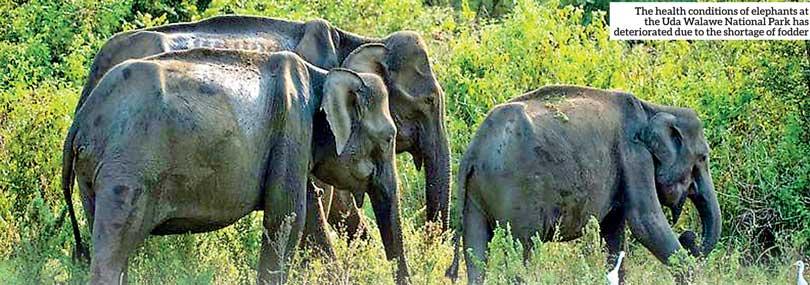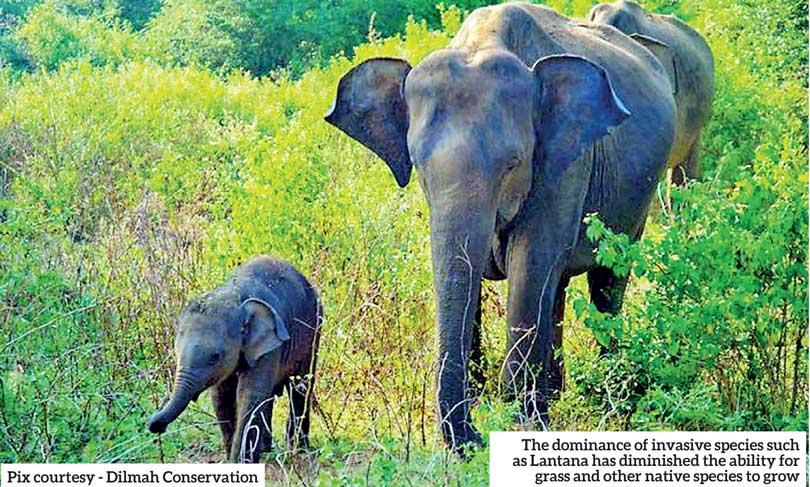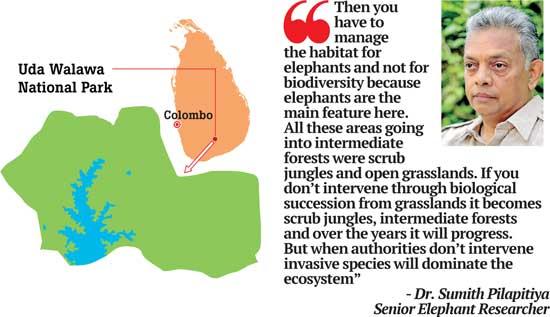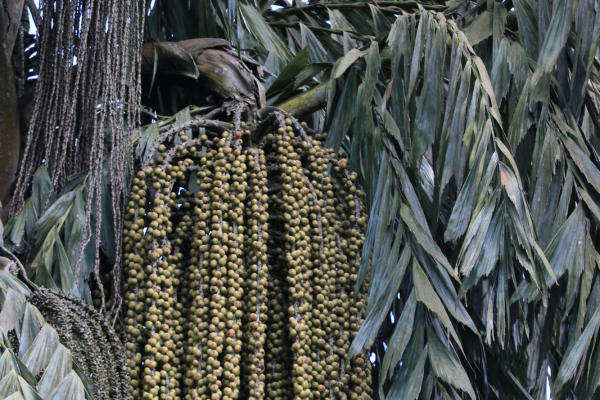Spotlight on Uda Walawe National Park Jumbos starve due to scarcity of fodder, grazing cattle-by Kamanthi Wickramasinghe
Source:Dailymirror
- Elephants at the Uda Walawe National Park are starving due to a massive shortage of food
- Fingers are pointed at the authorities for being responsible for poor habitat management at Uda Walawe National Park
- Another major issue at national parks is the release of cattle for free grazing
- Senior ecologists observe that the after growth from chena cultivation is very good elephant habitat
It was a little past noon when we reached the Uda Walawe National Park. We were excited to see elephants in their natural habitats, but serious concern was bothering everyone of us at the same time. In the backdrop of battling with an aggravating human-elephant conflict, environmentalists have speculated whether elephants at the Uda Walawe National Park are starving due to a massive shortage of food. As we entered the Park, we noticed speculation turning to truth.
Excellent habitat for elephants
Uda Walawe was designated as a National Park in 1972 to primarily protect the immediate catchment of the Uda Walawe reservoir while also providing refuge for displaced elephants. The area where the Park lies at present was once used for chena cultivations. Senior ecologists observe that the after growth from chena cultivation is very good elephant habitat. “Elephants don’t like thick forests,” said Senior Elephant Researcher Dr. Sumith Pilapitiya. “It’s a misconception on our part. We think elephants like thick forests. In primary and secondary forests the density of elephants is about 0.2 elephants per square kilometre; which means each elephant in that habitat needs about 500 hectares for survival per year. In scrub jungles, grasslands and chena after growth the density is three elephants per square kilometre which means you need only 33 hectares per elephant. Uda Walawe had so many elephants because it was old chena land and it was an excellent habitat for elephants,” explained Dr. Pilapitiya.
Poor habitat management?
The vegetation at Uda Walawe National Park comprises old-growth Dry-Mixed Evergreen Forest, the climax forest formation of the dry zone and its successional stages. The major vegetation types are Dry-Mixed Evergreen Forest, riverine forest along Walawe River, savanna, scrub, and grassland. But as our jeep driver drove towards the heart of the National Park the heavy dominance of invasive species including Lantana and Podi Singho Maran (Eupatorium odoratum) was evident. The growth of invasive species limits the growth of native species and as a result the herbivores experience a scarcity of fodder. This is one of the reasons for elephants to move out of national parks in search of food, thereby resulting in the human-elephant conflict.
“Uda Walawe is a park that is largely being managed for elephants,” Dr. Pilapitiya continued. “Then you have to manage the habitat for elephants and not for biodiversity because elephants are the main feature here. All these areas going into intermediate forests were scrub jungles and open grasslands. If you don’t intervene through biological succession from grasslands it becomes scrub jungles, intermediate forests and over the years it will progress. But when authorities don’t intervene invasive species will dominate the ecosystem,” said Dr. Pilapitiya
He said that one of the most evident signs of a poor habitat is when elephants are found in smaller sub groups. “The smaller the group it gives an indication of how bad the habitat is. In Minneriya for instance, you see large herds of elephants because there’s food in abundance. In any national park if you see 2-3 groups of elephants there is a serious habitat problem,” he added.
Control burning as an immediate remedy
Ecologists observe that control burning is an effective habitat management tool in a situation like this. Dr. Pilapitiya explained that in order to make grasslands more attractive for elephants they need to be burned. “With control burning you create fire barriers so that the fire won’t spread and you set fire to it a month or so before the rains start. With the rains, fresh grass starts growing. This is what attracts all herbivores. But perhaps due to criticisms and blame games the authorities may not be using these tools effectively,” he added.
Open areas that receive direct sunlight are ideal environments for invasive species to grow and take over native species. Dr. Pilapitiya observeed that the prevailing habitat at the Uda Walawe National Park is not favorable for elephants. His statement was made even clearer when we witnessed three elephants feeding on a small patch of grassland by the side of the road. One of them, a she elephant, looked extremely starved as its ribs and skeletal frame were visible even from a distance.
“Their body conditions have deteriorated and unfortunately the situation has now gone beyond control burning. It is difficult to control burn this kind of habitat as it has grown too much. The invasive species and scrub jungles need to be removed followed by control burning in order to make it a suitable habitat for elephants once again,” Dr. Pilapitiya added.
Several environmental organizations have conducted successful programmes to remove invasive species in places such as Lunugamvehera and Minneriya National Parks. These initiatives included the local communities thereby engaging them in livelihoods at the height of the pandemic. “If the authorities have the financial allocations they can perhaps use community labour to remove invasive species,” Dr. Pilapitiya further said. “No protected area can survive if the local community doesn’t benefit from it and there’s no livelihood for them,” he added.
A war over grass
Another major issue at national parks is the release of cattle for free grazing. “Many local cattle owners don’t have grazing grounds for their cattle. Therefore they deliberately release their cattle into the national parks for free feeding. When the cattle eat grass there’s less fodder for elephants and as a result they will go outside looking for fodder. Elephants eat grass in such a manner that it tends to grow back fast. But when it comes to cattle they eat it right to the ground and it takes time for the grass to grow. On the other hand, domesticated cattle that enter the parks bring external diseases to wildlife and at the same time take wildlife diseases out of the park,” he explained.
No issue with regards to shortage of fodder: Park Warden
Despite concerns raised by ecologists, the Park management observes that this is a usual occurrence. “By the end of 2022 and beginning of 2023 there was a heavy drought followed by heavy rains,” said Uda Walawe National Park Warden Uthpala Adaranga. “After the rains and up until now there has been no issue with regards to a shortage of fodder for elephants. In any national park there is a visible dominance of invasive species. In this zone there is an abundance of lantana and Podi Singho Maran. We need to allow the natural succession of vegetation. I believe that this is a sign of resilience. The grasslands see, to be shifting to a more advanced habitat as it is being replaced by shrubs. Herbivores feed on new grass as they constitute fiber and proteins. We have achieved around 25-30% of the climax forest formation. From trees such as Neem to Maila (Bauhinia Racemosa) we are now witnessing the growth of trees such as Palu(Manilkara hexandra) and Weera (Drypetes sepiaria) as well. Therefore I believe that a natural succession of vegetation types is underway to restore the park back to a normal habitat,” especially for herbivores,” he concluded.

























